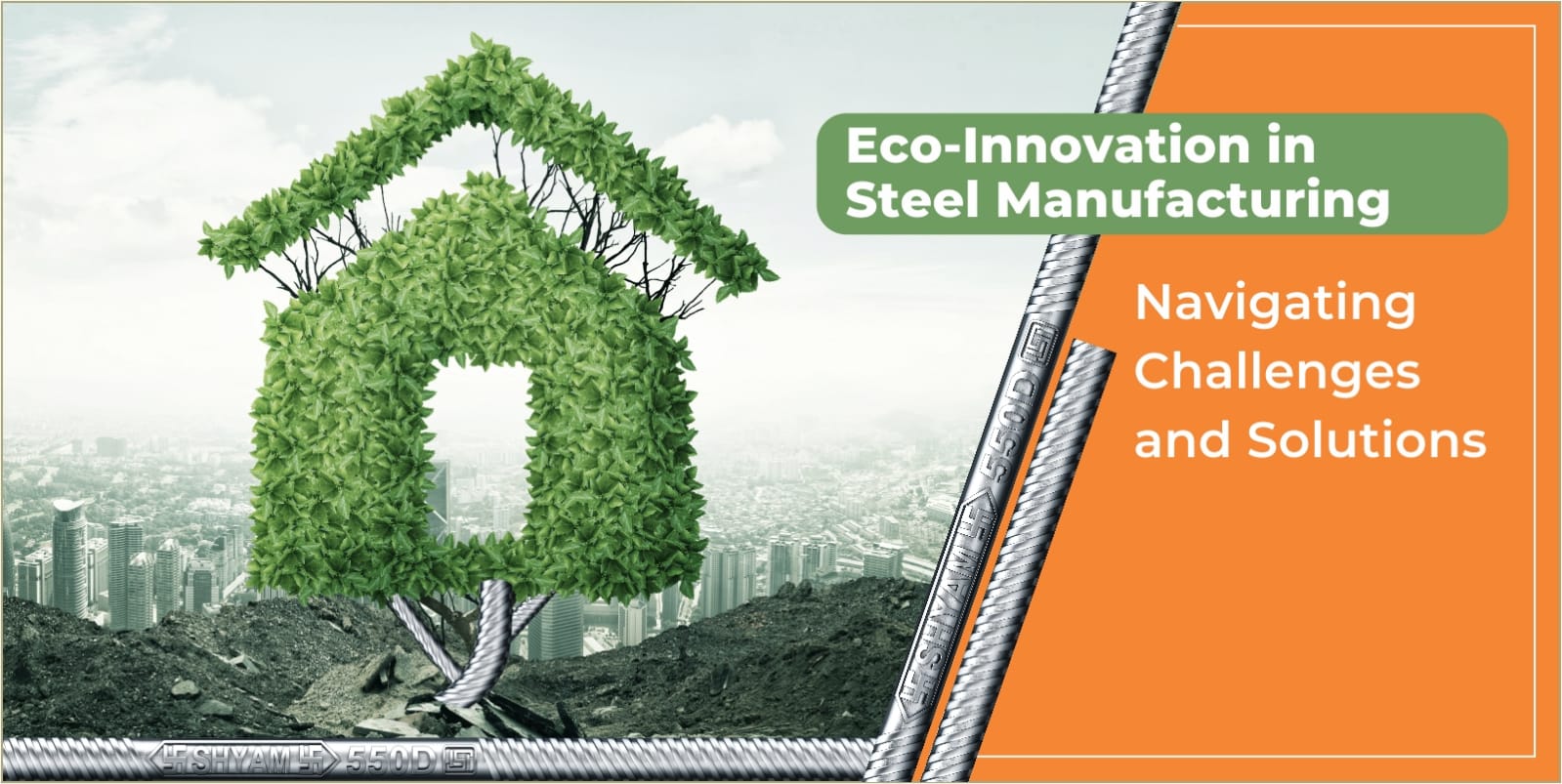Eco-Innovation in Steel Manufacturing: Navigating Challenges and Solutions
Steel is one of the most essential elements in the construction world. From the buildings where we stay to the cars we drive, you can find steel everywhere. However, there is a strong realization among people on why the traditional methods of making steel come with a heavy price tag. The steel industry contributes to a large portion of carbon emissions, close to about 7-9%. Thus, it is one of the biggest contributors to climate change.
But, with heavy pressure from the government, asking investors and consumers to go green, the steel industry is currently balancing on a pivotal joint. Embracing eco-friendly innovations has not only become a survival factor but will also lead to a sustainable future. But, the road to greener steel is filled with a lot of bumps. Read till the end to learn about the main hurdles that the industry is facing and the innovative solutions paving the way.
The Biggest Challenge is Going Green
Transitioning from traditional steel manufacturing to a more sustainable model is challenging. Here are some challenges that the industry has to grapple with.
- Energy Intensity
Making steel requires very high temperatures. The high temperature comes mainly from fossil fuels. Therefore, replacing fossil fuels with cleaner energy resources is a bit challenging and tricky.
- Higher Expenses
Eco-friendly technologies often require higher upfront expenses. This includes upgrading equipment, green energy infrastructures, and research and development.
- Technological Barriers
Most of the green solutions, like hydrogen-based steel production, are still in the early stages. They cannot be scaled for global demands as of now.
- Lack of Regulation and Incentives
Lack of financial support and government regulation policies make it harder for the steel companies to commit to sustainable practices.
- Market Competition
Some producers hesitate to adopt expensive innovations due to tight profit margins. Unless there is a clear business incentive, producers won’t be able to lead those innovations.
Despite all these challenges, several ground-breaking solutions are emerging that could be a game changer for steel manufacturing.
Hydrogen-Based Steelmaking: A Fresh Initiative and Clean Alternative
One of the most promising initiatives is to use hydrogen instead of coal to reduce the use of iron ore. This process is called hydrogen direct reduction. It produces water vapor instead of producing harmful carbon dioxide gas. While this initiative is still in the early stages of development, pilot projects in Asia and Europe are showing promising results.
But what is the challenge? Manufacturing hydrogen in an eco-friendly manner, which is referred to as green hydrogen, still demands plenty of renewable energy. Yet renewable energy isn’t present at scale in various regions of the globe. But with more attention and investment, steel production on the basis of hydrogen might be a significant portion of the industry’s future.
Electric Arc Furnaces: The Best Option for Recycling
Electric arc furnaces offer another eco-friendly option. They are best for recycling scrap steel. The electric arc furnaces melt down re-used steel through the use of electricity, an energy process requiring much less electricity than producing raw steel from the iron ore process. With use of renewable power, the electric arc furnaces can lower the emissions considerably.
That being said, this process relies completely on high-quality scrap and clean power. But, these furnaces are not always available in every region. Yet, it is an effective technology for boosting circular economy practices in several steelmaking industries.
Policies and Partnerships that support New Innovations
Eco-friendly innovations do not happen in a vacuum. It happens only when the right support system is in the right place. Here is how various organizations are supporting the drive for change.
- Government
Governments are pushing companies towards sustainable choices by introducing green subsidies or carbon pricing.
- Private Investment
From large steel conglomerates to venture capitals, funding is properly channeled into pilot projects and clean steel technologies.
- Global Collaborations
Initiatives like partnerships and green steel challenges between the countries help in sharing knowledge and boost innovations worldwide.
Conclusion
Steel’s journey towards achieving sustainability is not short. Rather, it’s a marathon race. But, the steel manufacturing industry is showing good signs of real progress. As more companies invest in carbon capture technologies and hydrogen-based production, we are gradually moving towards a position where steel remains a strong material without costing the planet.
The way ahead for steel is the formation of novel concepts, team effort and eagerness to do new things and leap ahead into a promising tomorrow. Eco-innovation ultimately boils down not to greener plants but also to constructing a accountable and durable planet.

